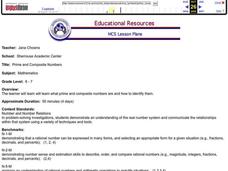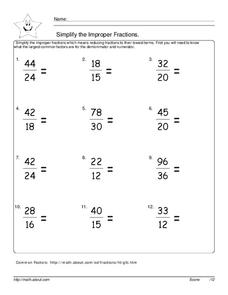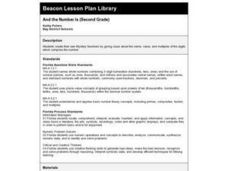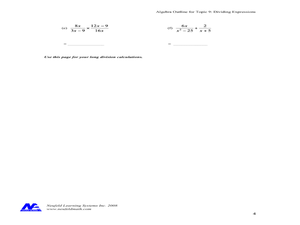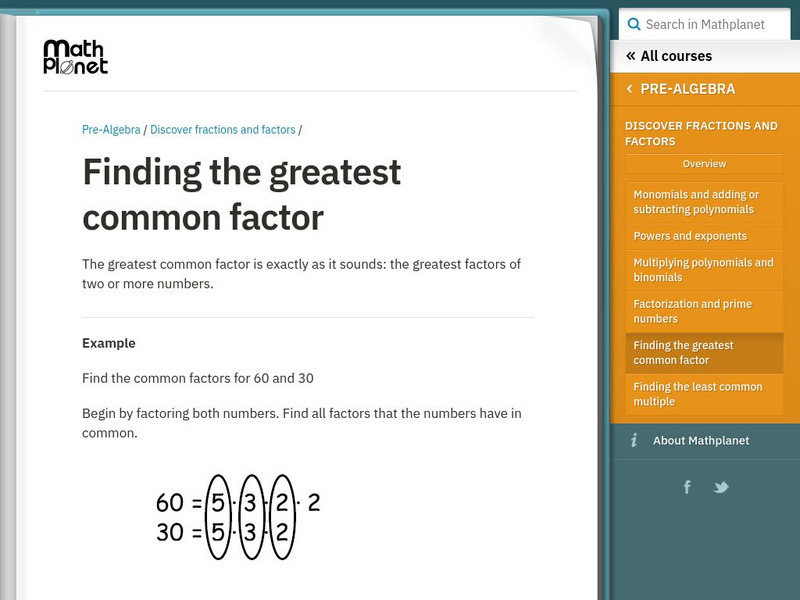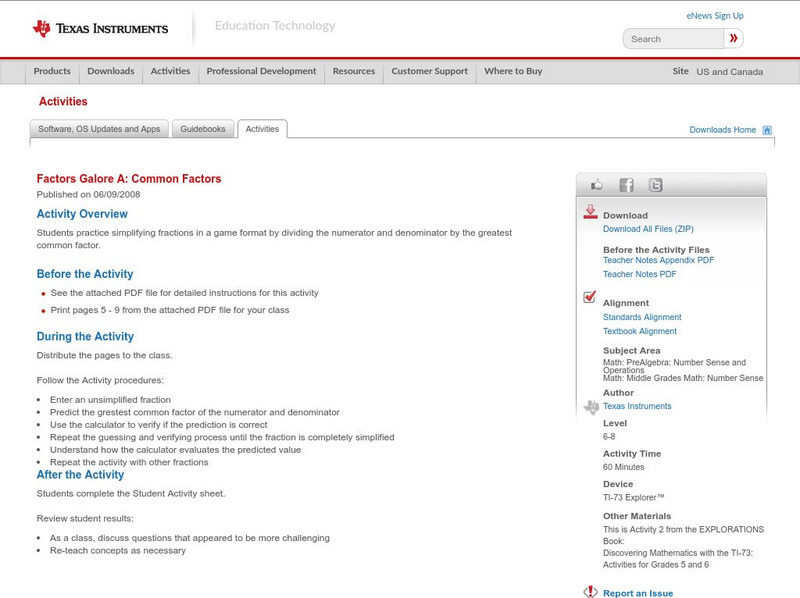Noyce Foundation
Photographs
Scaling needs to be picture perfect. Pupils use proportional reasoning to find the missing dimension of a photo. Class members determine the sizes of paper needed for two configurations of pictures in the short assessment task.
Curated OER
Prime and Composite Numbers
Prime and composite numbers are the focus of this mathematics lesson. In it, learners practice techniques for identifying these two types of numbers. They utilize the Inspiration program to complete a task that is clearly explained, and...
Curated OER
Classify and Measure the Angles
In this angles worksheet, students classify and measure 2 given angles, using a compass to determine the angle within 5 degrees. Worksheet is part of a resource directory site with links to many additional activities.
Curated OER
Mountain Math Worksheet
In this number sense instructional activity, 5th graders solve 37 problems based on a given number. Students are asked to round the number, identify the number as even or odd and add 100 to the number.
Curated OER
Empirical Formulas
In this empirical formulas worksheet, students read about determining empirical formulas from chemical formulas. They determine the empirical formula given ten molecular formulas. They also find the molecular formulas given the mass and...
West Contra Costa Unified School District
Derivation of the Quadratic Formula
What connection does the quadratic formula have with a quadratic equation? Using a matching activity, pupils construct the algebraic derivation of the quadratic formula in this Algebra II lesson task. The task provides two variations of...
Curated OER
Divisibility Checks: Paired Activity
In this division game instructional activity, students will work in small groups to play a game about dividing numbers. A teacher's guide with game instructions is included.
Curated OER
Sieve of Eratosthenes
Young scholars investigate numbers, ways of representing numbers, relationships among numbers and number systems. They comprehend the meaning of operations and how they relate to each other.
Curated OER
Finding Remainders in Pascal's Triangle
Learners use clock arithmetic to find remainders. In this patterns in math lesson, students explore the relationship between clock arithmetic and remainders using a computer applet. Learners also identify patterns in Pascal's triangle...
Curated OER
And the Number Is (Second Grade)
Second graders create Mystery Numbers. They give the class clues about the name, value, and multiples of the digits which make up the number.
Curated OER
Negative Exponents and Scientific Notation
In this exponent rules worksheet, students simplify 56 negative exponents and scientific notation problems. Students use exponent rules to simplify each problem.
Curated OER
Dividing Expressions
In this algebra worksheet, learners divide expressions and utilize exponent rules. There are 7 questions with multiple parts.
Curated OER
March of the Dividing Ant
Young scholars inspect divisibility rules. In this divisibility rules lesson, students study the relationship between factorization and the divisibility rules for 2, 3, 5, 6, 9, and 10. Young scholars read One Hundred Hungry Ants and A...
Curated OER
Divisibility Rules
Eighth graders explore Excel and discover rules of divisibility for the numbers 2, 3, 4, 5, 6, 9, and 10; students examine multiples of 2 using pencil/ paper, then create a chart in Excel that will allow them to more easily see patterns...
Curated OER
Team Puzzles
Fourth graders work in co-operative teams of four to complete a puzzle. Each student initially works independently, and then the team jointly puts together the four shapes they have individually made, to complete the puzzle.
Scholastic
Scholastic: Study Jams! Math: Fractions: Greatest Common Factor
Complete a step by step process to determine the greatest common factor.
Other
Help With Fractions: The Greatest Common Factor
Two different methods of finding the greatest common factor are explained at this one page website. It is very easy to follow the step by step directions.
Math Planet
Math Planet: Pre Algebra: Finding the Greatest Common Factor
Gain an understanding of how to find the greatest common factor by viewing examples and a video lesson. [1:47]
Texas Instruments
Texas Instruments: Factors Galore A: Common Factors
Students practice simplifying fractions in a game format by dividing the numerator and denominator by the greatest common factor.
Texas Instruments
Texas Instruments: Finding the Gcf
Students simplify fractions by dividing the numerator and denominator by the GCF (the greatest common factor). They check their work by using a calculator.
McGraw Hill
Glencoe: Self Check Chapter Test Fractions and Decimals
Students are assessed on fractions and decimals. Topics include greatest common factor, improper fractions, and fractions as decimals. The self-checking test includes hints and solutions.
Goodwill
Gcf Global: Comparing and Reducing Fractions
Tutorial provides instruction and practice with comparing and reducing fractions.
Better Lesson
Better Lesson: Greatest Common Factor
Sixth graders will learn how to find the Greatest Common Factor of two or more numbers by using math manipulatives.



